When it comes to generating adrenaline, few forms of fishing can compete with bluewater big-game angling. Leaping billfish, unstoppable tuna, and offshore predators that have the size and power to match your own—or beat it—present a challenge that simply can’t be matched by inshore fish. But to get in on this kind of action you must, of course, have a solid foundation of fishing knowledge to work with. You can’t just grab a spinning rod and some worms, head through the inlet, and expect to be successful.
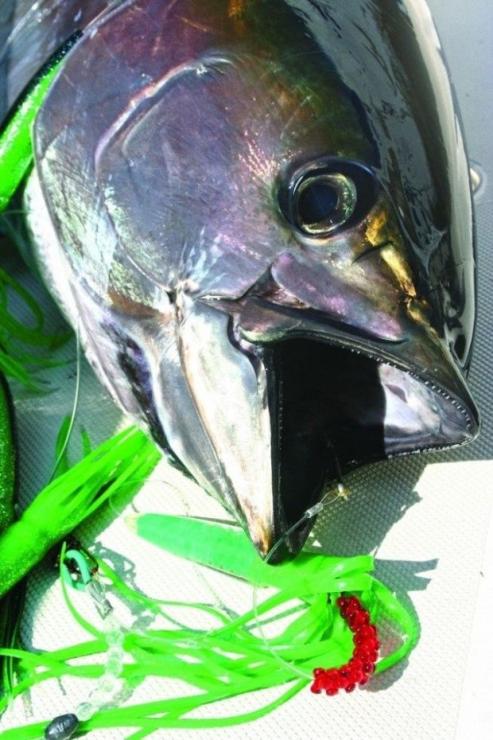
Feeling the urge to take on bluewater monsters, but you don’t have the experience or the know-how? Taking a chartered trip or two with a pro crew is a great way to soak in some knowledge, but if that’s not your style, or if you’ve already paid your way onboard once or twice, don’t worry. That’s what we’re here for—armed with the information you need to get through Bluewater 101, you’ll be ready to point the bow towards the Continental Shelf and get your offshore fishing career off the ground.
Getting Geared Up
The big game found offshore require an entirely different set of gear than you’d use for inshore fish, much less those found in the Chesapeake and similar bays. For starters, leave the net at home and get a gaff. Those potent pelagics can swim right through the mesh of a net, and you’ll need to get a big hook into one to drag it over the gunwales. It’s also a good idea to keep a billy club onboard, for subduing particularly feisty critters. And make no mistake about it, some of the fish you’ll encounter in the deep have the strength and the will to do damage or cause injury when you pull them into the boat.
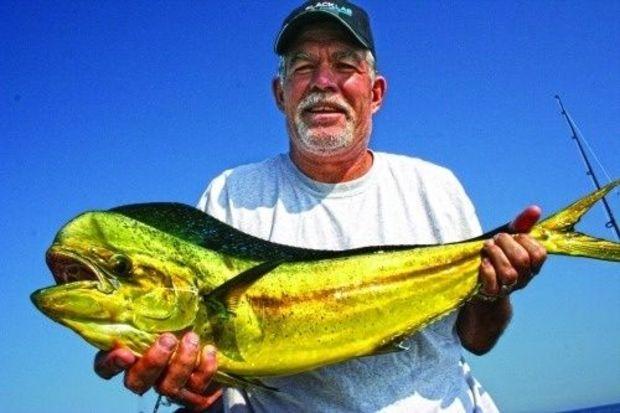
Rods and reels should be conventional or spinning in the 20-pound class to take on mahi-mahi, and conventional gear in at least the 30-pound class for anything larger such as billfish, wahoo, and tuna. The level-winder reels found on many Bay-sized conventional rigs must be left at home, because these speedy fish can rip out drag so quickly that the worm gear in a level-winder will overheat and fail. Reels with lever drags are superior to those with star drags since you can accurately adjust them on the fly. And all of your rods should have gimbaled butts which fit a rod belt and harness—necessary if you don’t want your belly to be black and blue after tangling with an ornery offshore fish. If you’re lucky enough to have a large boat with a fighting chair that holds a gimbaled butt, so much the better.
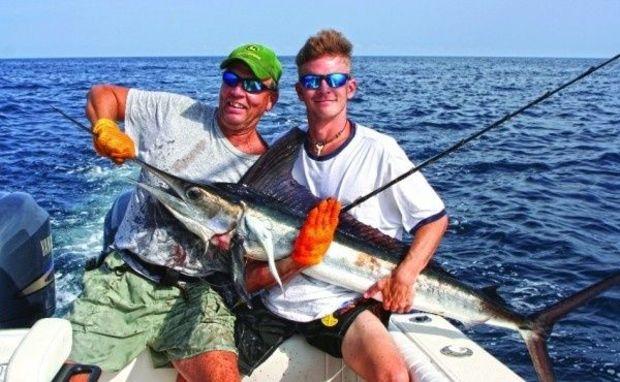
Your reels can be spooled with either monofilament or braid line, but remember that braid gives you a lot more pound-for-pound line capacity. And you will need a lot of capacity. Even an average-sized yellowfin tuna in the 40-pound range can quickly rip 100 yards of line off of a 30-pound class reel, and a billfish can do the same and then some in a matter of seconds. When it comes to lures, obviously you have a lot of choices. There are, however, a few standbys every bluewater angler should have onboard. Squid spreader bars (bars that drag multiple teaser lures, with a trailing lure that has a hook) in green, pink, and “rasta” color combinations are a must-have. Green Machine lures are a classic lure that nearly every fish in the ocean will strike.
If you want to target tuna, feathers, cedar plugs, and Tuna Clones (or similar lures) are all good bets. For wahoo, make sure you have some purple/black color combinations in the mix. All of these lures can be bought pre-rigged, which is a good thing for beginners. Start off using what you find on the store shelves, and as you become more familiar with hooks, crimping, and leaders, work your way up to building your own rigs. Wait a second—what about rigged ballyhoo? Aren’t they one of the most effective items to troll? You bet. Unfortunately, learning how to rig a ‘hoo is a process that takes a lot of experience. And store-bought pre-rigged ballyhoo are rarely satisfactory. To start out, buy a pack of pre-rigged ballyhoo and a pack of un-rigged ballyhoo every time you head offshore. Then you’ll need to practice, practice, practice, until you can rig up a ballyhoo that swims like the real thing. At the same time, read books like Offshore Pursuit (by John Unkart, a professional mate) that have detailed diagrams showing rigging methods, and comb the Internet for tips and tricks.
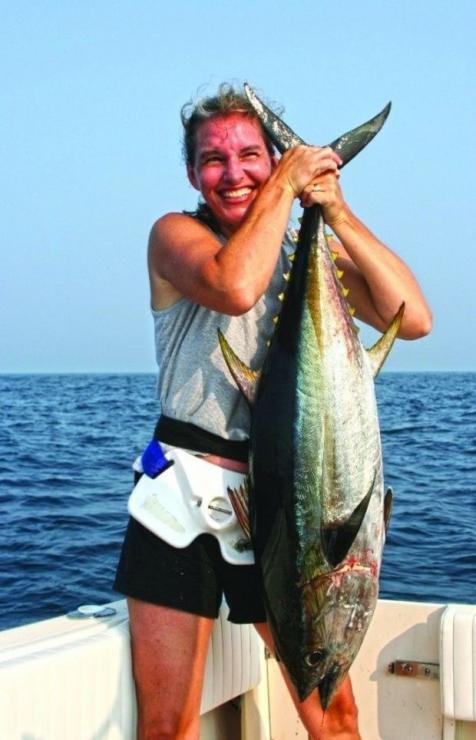
Does gearing up with all this stuff sound expensive? Good—it should. Simply put, if you get cheap gear you can expect it to fail. Rod and reel combos that sell for $100 to $200 are almost guaranteed to break, corrode, and let you down. When shopping for a good offshore rig you should expect to spend a minimum of $300 to $500. If you’re unfamiliar with this type of gear, you should ask for help from a knowledgeable salesman at a shop that carries a wide selection of offshore tackle, such as Alltackle (with locations in Annapolis and Ocean City), Anglers (just off route 50 in Annapolis), or Ake Marine (in West Ocean City, near the public boat ramp).
Trolling Basics
Okay—you’re ready to run offshore and set a trolling spread? The basics are the same as they are for other types of trolling. Maximize the offerings, vary them as much as possible, and when you find out what’s working on any given day, switch the other lures or baits to match it. When trolling offshore, most anglers will set a speed of about six knots for tuna; slow it down to target bluefin in specific, and speed it up a bit for billfish. As usual, the best way to set your speed is to look at your lures and baits, and make sure they’re running right. If you’re not getting hits or strikes, speed up, slow down, or try changing course.
A six-line spread is usually considered minimal for offshore trolling. It should have at least one of those spreader bars, one of the Green Machines, and two rigged ballyhoo. Use the two remaining slots and any additional lines to experiment with other lures. Stagger the distance the lures run behind the boat in 20-foot or so increments, starting about 30 feet back behind the transom. Spreader bars are run close, so lures set behind them appear to be critters that lost pace with the school and are easy pickings. Note: when setting spreader bars, set them back far enough that all the teasers are in the water, but the bar itself is not. The bar should always run just out of the water. If you have outriggers, you can keep the bar a bit higher by running it from the short rigger (closest to the boat) position. Tip: If you want to catch mahi-mahi, put a small pink lure in the spread. These fish may not be “glory” fish like billfish and tunas, but they are plentiful offshore and they taste great. A four-inch squid or feather lure run 30 to 40 feet behind the boat will produce plenty of fish for the grill.
Chunking Basics
The idea behind chunking—which is almost always employed for tuna—though mahi-mahi will often enter chunk slicks and end up on your hook—is pretty darn simple, and Bay anglers are familiar with the concept from chumming. Here’s how it works offshore: hack up a bunch of butterfish, and toss handfuls of fish bits the size of dominos into the water to attract tuna. A 25-pound flat of butterfish (available at most any ocean-side tackle shop) will keep an average chunk line going for about four or five hours. If you plan on a full day of fishing, two flats will be needed.
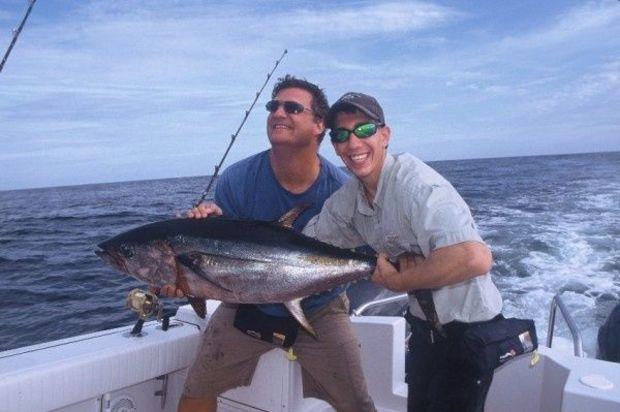
Where to place your baits in the water column is one of the most important aspects of chunking. The bottom line: you will catch fish from the surface baits, mid-depth baits and bottom baits, at different times on different days. Trying to predict which will be the most effective ahead of time is impossible, so you should always try to cover all the bases. When one particular depth seems to be the productive one for that given day, switch your other rigs around accordingly. Sink baits by attaching weights to the line with rubber bands, which secure the weight in place until a tuna starts swimming away at 40 mph, at which point they break free.Traditional theory holds that for yellowfin tuna you cut off the head and tail off the butterfish, turning the body into an extra-large chunk. Insert an 8/0 to 10/0 hook rigged on a four- to five-foot leader (fluorocarbon is best, start with leaders in the 80-pound range but drop in size if you aren’t getting bites) on the tail-end next to the spine, run it into the bait, and pop it out the other side. For bluefin, however, many experienced anglers feel you should use the entire butterfish. I’ve found both or either baiting method can be more or less successful on any given day, so I usually try each one and see what works. In either case, do your best to hide your hook in the bait.
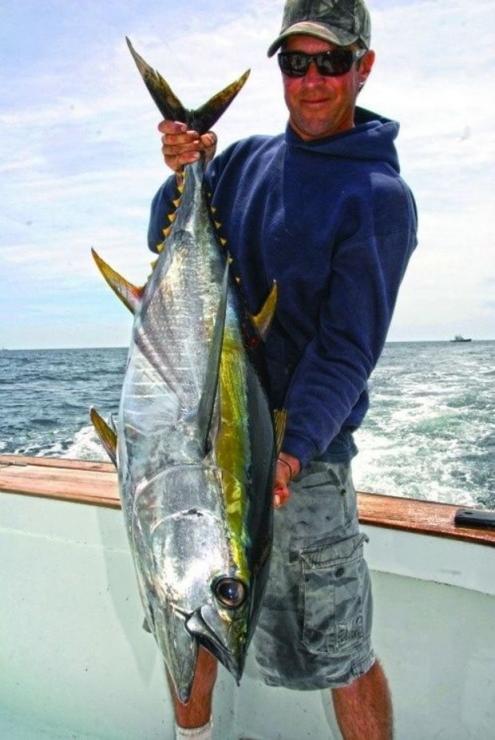
Chunking can be done at anchor or on the drift. At anchor is usually more effective, but when the wind and current conspire to push your baits up against your anchor line, drifting is mandatory. Either way, keep the chunks flowing steadily. Toss out a handful, watch until they disappear from view, then toss out another.
Bonus chunking tip: Savvy anglers will keep a spinning rod rigged with a small bait at the ready, so when a mahi-mahi gets spotted swimming through the chunks, you have an offering at the ready. Double bonus tip: Any time you see an item larger than a five-gallon bucket floating on the surface of the ocean, whether running, trolling, or chunking, pull up next to it and toss in a handful of chunks plus the mahi rig. This species often gathers under flotsam, boards, and thick weed paddies.“Stripper” baits—rigged with no weight at all—are also highly effective. When you lower one over the side, throw in an extra-large handful of chunks, scattering them in the water all around your bait. Then put the reel in free-spool with the clicker on. Strip line from the reel by hand, always maintaining some slack so the bait sinks unrestricted. Fished in this way, the bait will sink through the water column at roughly the same rate as the chunks, and will look as natural as possible to the fish.
Okay: do you feel just about ready to give bluewater fishing a shot? Good. But remember, this is called Bluewater 101 for a reason—we’re barely scratching the surface of this topic, and people spend decades honing their offshore fishing skills. The good news is that every time you run offshore and add to your experience, it’ll be a serious adventure. Get ready for the adrenaline rush.
About the Author: For more detailed information on offshore fishing or to read more how-to/where-to fishing info by Lenny Rudow, check out his books on amazon.com, smashwords.com, or check out his website hookedonfishingboats.com.